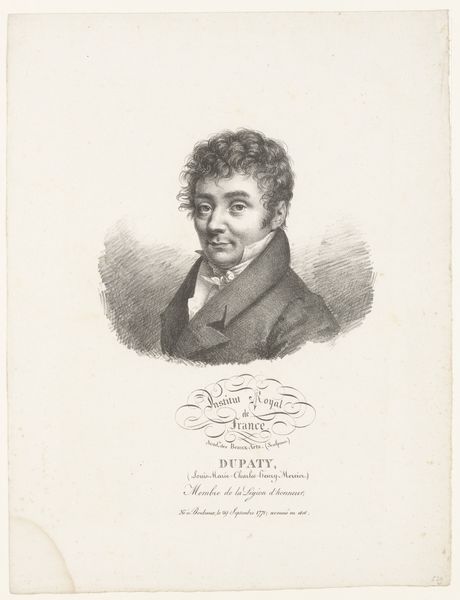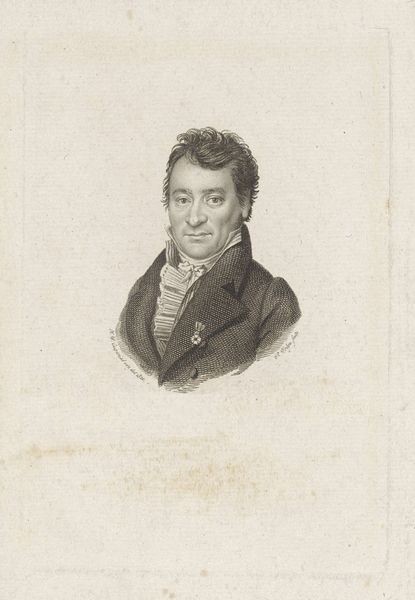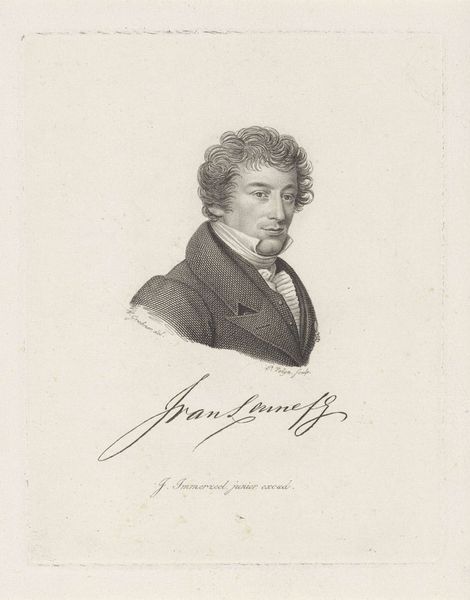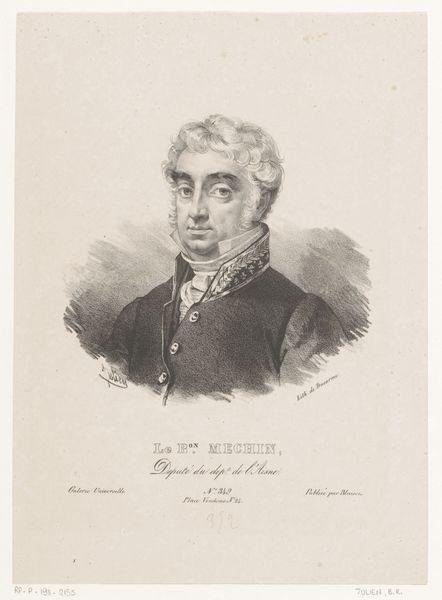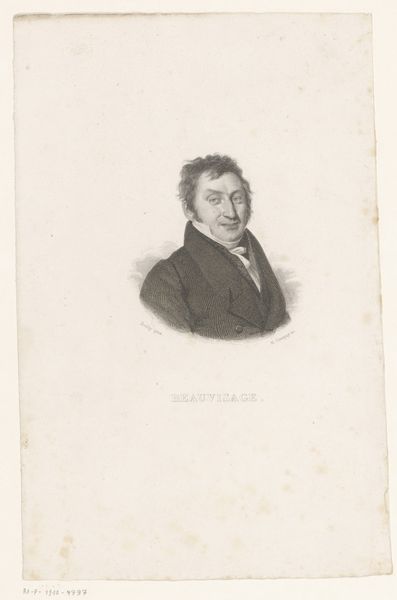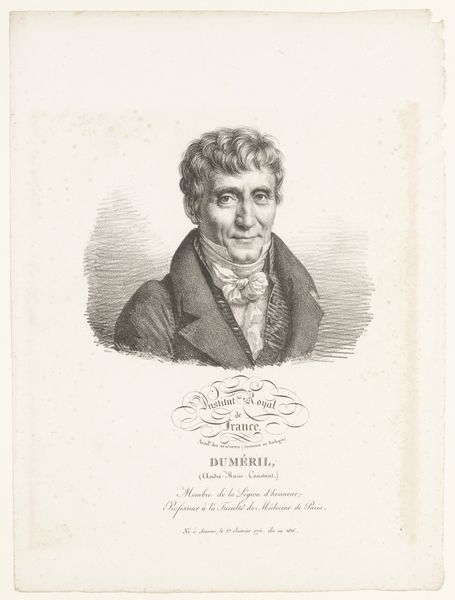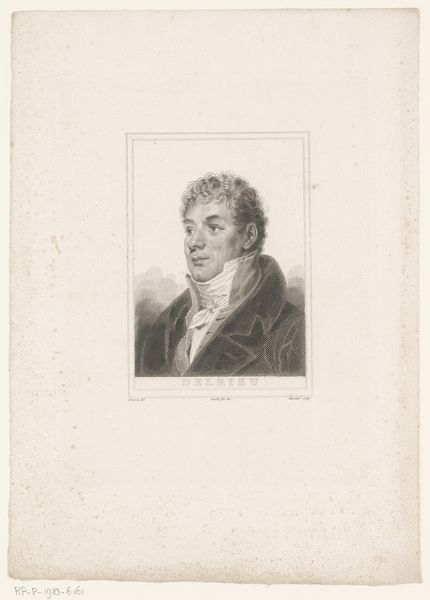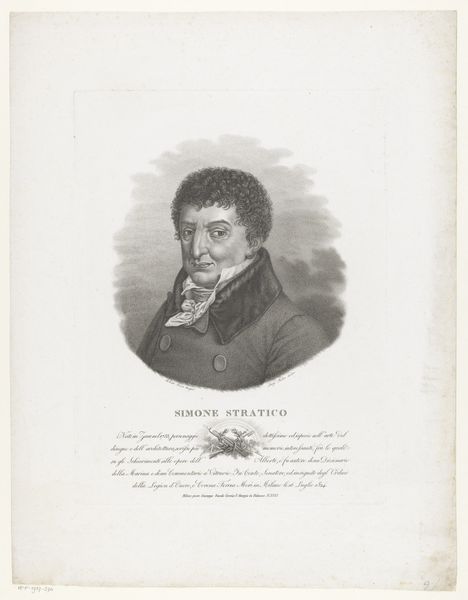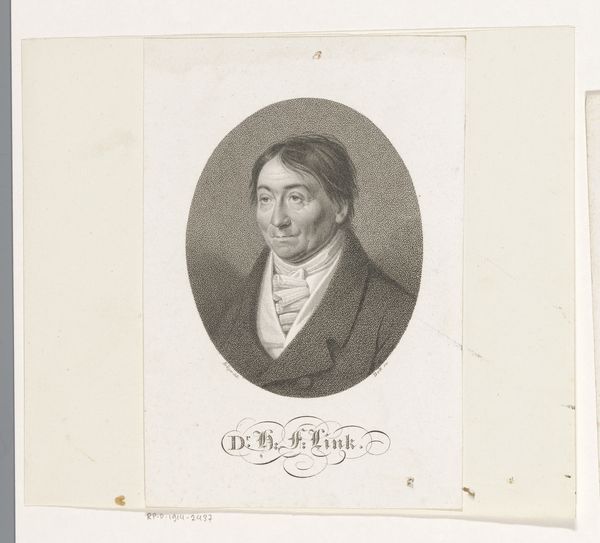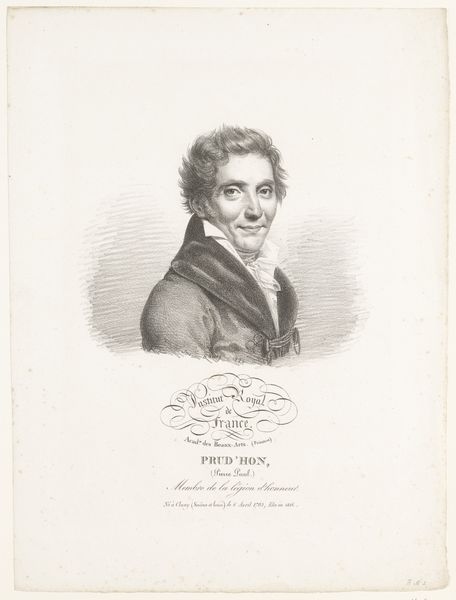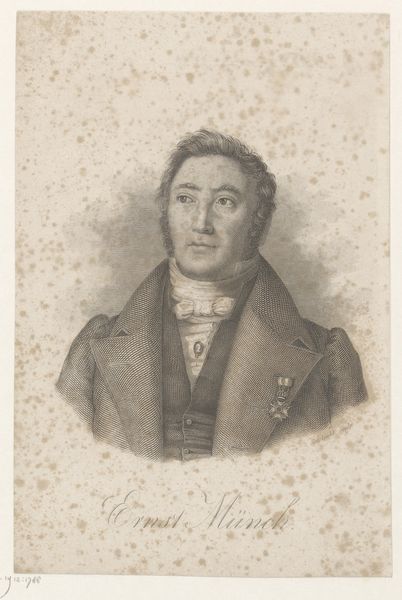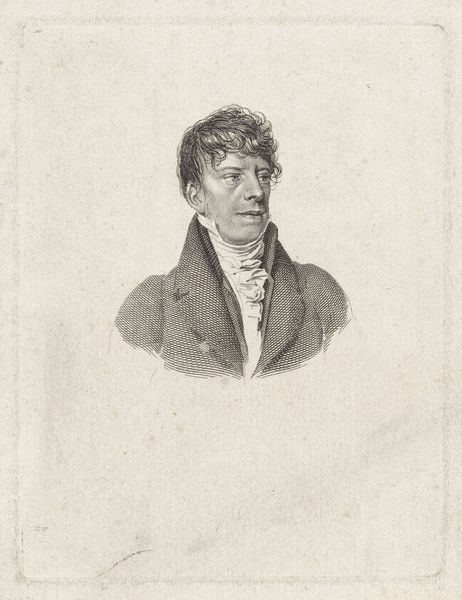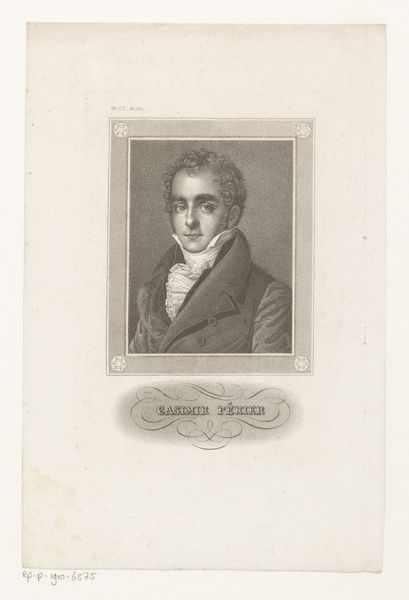
print, ink, engraving
#
portrait
#
neoclacissism
# print
#
portrait reference
#
ink
#
line
#
engraving
#
realism
Dimensions: height 235 mm, width 145 mm
Copyright: Rijks Museum: Open Domain
Curator: The work before us is a portrait of Willem Bilderdijk, created in 1832 by Philippus Velijn. It’s an engraving, a type of printmaking that was popular for distributing images widely at the time. Editor: There's something quite stern and reserved in his gaze. I wonder, who was Bilderdijk and what societal roles or expectations shaped this representation? Curator: Willem Bilderdijk was a fascinating figure, a Dutch writer, poet, and lawyer known for his staunch conservatism and strong nationalist sentiments. This portrait presents him with a certain gravitas, very much in line with the neoclassical ideals of the period, aiming for order and a sense of timelessness. Editor: You see the "timelessness," I initially perceived a clinging to tradition amid shifts in Dutch society after the Napoleonic era. Was this idealized portrayal, a kind of visual propaganda reinforcing his political stance? The intricate lines used to form the likeness also speak to a desire for control and detail. Curator: It is likely meant to communicate his stature and intellect, essential qualities for someone of his position. Notice how the engraver used fine lines to create subtle tonal variations and textures, capturing the details of Bilderdijk’s face and clothing. The overall effect is one of precision and clarity. Look at his peculiar curly hair and the ornate detail on his cravat, all indications of status. Editor: Indeed, these visual cues tell a story. That ruffled cravat is almost weaponized, it’s so intentionally stylized. The way he is positioned and framed—from this contemporary perspective, these controlled depictions feel charged, reflective of power structures present in the Netherlands at the time. How much agency did someone like Velijn have in perpetuating such imagery? Curator: As an iconographer, I'm struck by how portraits, like this one, served to fix a person's image in the collective memory. Every detail—from posture to dress—becomes symbolic, contributing to the subject’s legacy. The swirling lines of the artist’s signature are echoed by the rendering of Bilderdijk's hair—a detail that points to the intentional creation of the man’s legacy. Editor: Ultimately, analyzing even a single portrait opens avenues for understanding not only the individual depicted but also the socio-political context that shaped both his identity and its visual representation. And it reminds us that portraiture is always a conscious act, even if subtle, of claiming power. Curator: Absolutely, and it’s through studying these symbols that we can connect with the past and interpret its messages in the present.
Comments
No comments
Be the first to comment and join the conversation on the ultimate creative platform.
